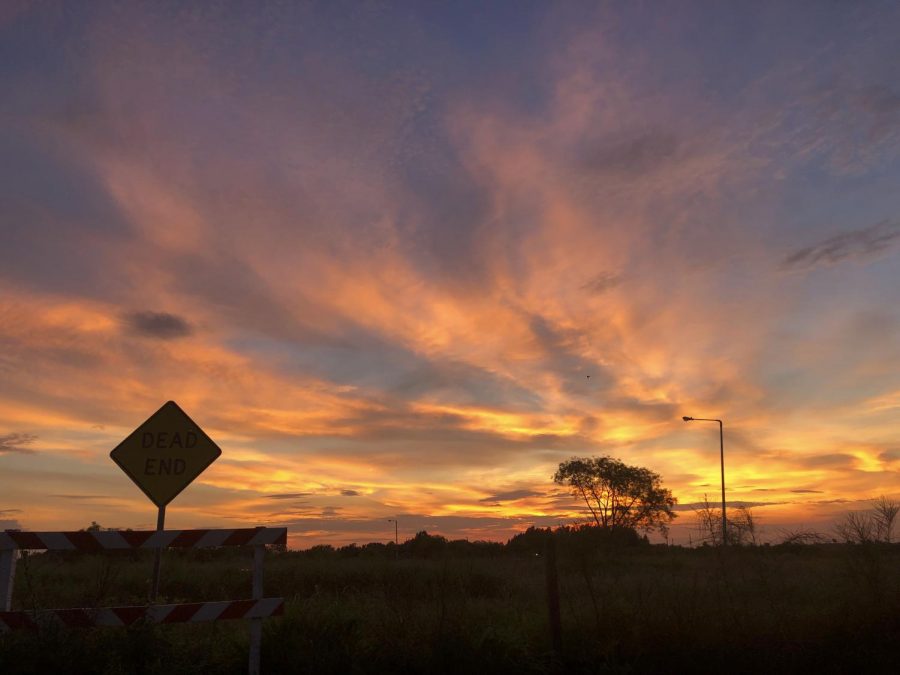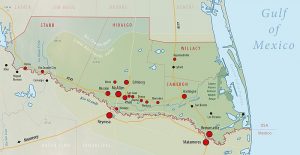Far From Mars, Musk Is Colonizing Vulnerable Communities
I’m worried SpaceX will damage the at-risk areas it hopes to take over
Elon Musk’s plan for Starbase has the potential to harm the vulnerable South Texas community and environment.
May 14, 2021
On March 30, Elon Musk tweeted to his more than 50 million followers: “Please consider moving to Starbase or greater Brownsville/South Padre area in Texas & encourage friends to do so! SpaceX’s hiring needs for engineers, technicians, builders & essential support personnel of all kinds are growing rapidly.”
Please consider moving to Starbase or greater Brownsville/South Padre area in Texas & encourage friends to do so!
SpaceX’s hiring needs for engineers, technicians, builders & essential support personnel of all kinds are growing rapidly.
— Elon Musk (@elonmusk) March 30, 2021
“Starbase” sounds like a modern-day City of Oz, invoking imagery of silver skyscrapers, shiny flying cars, emerald grass and general utopian abundance. But Brownsville, Texas, the nearest city to the proposed “Starbase,” sets a different scene: Downtown is full of brown buildings, many boarded up. The city is surrounded by dry brush, cactus and flat, vast miles of crop land.
This is not to say that Brownsville is a bad place to live. In fact, I was born and raised in the same county: Cameron County. Because of this, I know the reality of the area. Life is good there, but some conditions can make it hard. The county has the highest rate of child poverty in the state, about a third of people in the middle and lower income range have no health insurance, and one in three people are below the poverty line.
This area is home to vibrant biodiversity, history, culture, and most importantly, hard-working people. All of these things are worth preserving, yet they hang in a vulnerable balance.
Cameron County has many good qualities to counter the harsh ones. You can swim in the warm, clear waters of South Padre Island, or eat some of the best food in the world while shopping at one of its sprawling flea markets. Every Saturday, before COVID-19, you could find big families gathered in their yards, eating and drinking together in a way that seems to be lost in many other places across America. The sunsets here are some of the most beautiful I’ve ever seen. This area is home to vibrant biodiversity, history, culture, and most importantly, hard-working people. All of these things are worth preserving, yet they hang in a vulnerable balance.
This is why Musk’s announcement bothers me. I’m afraid that Cameron County is going to change forever — and not for the better. I’m concerned for the economic, social and environmental well-being of my home and the people who live there. I fear that innovation will give way to exploitation.
Ecological Risks
A report by the federal government assessing the environmental impact of SpaceX expansion on the South Padre Island/Boca Chica area found that SpaceX operations have the potential to impose a significant impact on water quality, wildlife (including endangered species), pollution and the spread of hazardous materials.
Debris from failed launches has littered nearby beaches and surrounding areas. National parks, like the Laguna Atascosa Wildlife Refuge, are too close to the launch facility to not be disrupted by the falling debris. Additionally, SpaceX facilities are known to violate hazardous waste protocols, leaking chemicals like jet fuel into nearby environments. This is alarming because it threatens those who call the park home: rare animal species like ocelots, jaguarundi cats, aplomado falcons, sea turtles, brown pelicans and other bird types.
There are only 50 ocelots left in the wild in the U.S., most in South Texas. I’ve seen a few in Cameron County; they’re beautiful little cats covered in leopard-like spots. I’ve also seen endangered sea turtles and brown pelicans up close; they’re all amazing creatures in their own ways. Living alongside these animals is a privilege, not a right. Their extinction would be a loss in itself, but there’s no telling how it could harm the larger ecosystem; some studies show that the extinction of one species can lead to the endangerment of others. There is no justification for putting them or their ecosystems in harm’s way, not even by a company like SpaceX, or a powerful man like Elon Musk.
It seems that SpaceX is more invested in the planet they hope to travel to than the one they currently inhabit.
The company does not care. It plans to fill in the wetlands where these animals live, irreparably altering them. It seems that SpaceX is more invested in the planet they hope to travel to than the one they currently inhabit.
Displacement of Locals
SpaceX fans and potential job-seekers likely saw Musk’s tweet as an open invitation to relocate, but this area is not his to give away; he’s advocating for something tantamount to modern-day colonization.
The poverty rate in the region where Musk is hoping to settle his fleet of investors, engineers, and rocket scientists is double that of the state of Texas, and the eviction rate is above the national average for locals. Competition in housing is a near certainty if Musk’s Starbase becomes a reality. This dream of his clearly prioritizes the interests of his company over the interests of average residents. Where will they go when the rich move in?
One study shows that residents in Cameron County would have to make $14 an hour to afford a two-bedroom, one-bathroom home, but the average wage of residents is $9 an hour. Nearly 60% of people below the poverty line in Brownsville are renters. So relocation of locals is not feasible in the event that the cost of living raises rent and expenses in their present homes, and locals are vulnerable to changes in cost of living.
It’s hard to predict whether or not the cost of living will rise anywhere for any reason, as that is influenced by multiple factors. However, a correlation between cost of living increases and sudden non-local growth and gentrification can be observed using historical examples.
The truth is that Cameron County is not prepared for the effects of the unnaturally rapid growth that tech companies bring.
Gentrification
One of the best things about Cameron County is its culture, which is a blend of Northern Mexican and Texan influence. Everywhere you go you hear Spanish being spoken, and a family-owned Mexican restaurant is always a stone’s throw away. Farming and agriculture, as well as strong collectivist community ties, make this place special. But if Starbase becomes a reality, an extreme influx of strangers is likely to water down, or worse, erase, the unique cultural makeup and way of life in the area.
This wouldn’t be the first time that the tech industry has taken over an area and gentrified it. San Francisco, New York, Seattle and Austin have all experienced cultural shifts as a result of a transplanted population’s influence.
The Urban Displacement Project found that the city of Austin is “facing redevelopment pressures and rising housing costs, resulting in the displacement of vulnerable residents, including low-income renters, low-income families with children, and persons of color, especially African American and Latinx residents.” As displacement and gentrification increased in the city, so did its population, which has spiked at five times the rate of the U.S. average, increasing the demand and cost of housing. Uncoincidentally, more out-of-state companies have been relocating to Austin than anywhere in Texas. All of these factors combined provide evidence of the adverse effects of tech company colonization.
That’s in Austin, a city with far less compounded struggles than South Texas. Imagine what could happen if SpaceX’s presence in Cameron County draws in other like-minded companies. The truth is that Cameron County is not prepared for the effects of the unnaturally rapid growth that tech companies bring.
The invasion of the company is unlikely to improve the lives of those who need it most, those who make the area special.
A Complicated Issue
I don’t want to be a downer. I would love nothing more than for SpaceX’s presence to act as a catalyst for positive change in the community. But the invasion of the company is unlikely to improve the lives of those who need it most, those who make the area special. Contrary to popular belief, Musk’s companies are not always fair toward their employees. Labor law violations have marked Tesla’s history, despite the company’s success.
Musk has tried to assuage fears about his planned actions; he promised a $20 million dollar donation to Cameron County’s public school system on the same day as his Starbase announcement. But the gift is not as meaningful as it seems, especially coming from the richest man in the world. There are 175 public schools in Cameron County. Assuming the money would be divided equitably, each school would get a one-time donation of about $115,000 dollars. This is a good sum, but when you consider that Texas spends on average about $10,000 per student a year, it becomes more obvious how this is just a short-term pacification rather than a serious effort to lessen his impact on the community. His donation is, by no stretch of the imagination, not enough to cover the expenses that Starbase would incur.
Elon Musk can mitigate the risk his company poses to the community by straying away from the strategies (or lack of) that most tech companies take when they set up shop in a new place. First of all, the housing dilemma needs to be solved BEFORE bringing tons of non-locals to the area. Even better, he should make an effort to include locals in his grand plans. If his goal is a sustainable company, why not develop the local population instead of just importing workers? Then Musk needs to seriously reevaluate SpaceX’s impact on the environment. An actual framework for any kind of accountability would be the bare minimum here; the stakes are high. This community is priceless.
A very watchful eye must be kept on SpaceX and big tech’s involvement in places like Cameron County. Musk needs to realize that his Starbase dream is being built on top of a place that already exists, an area that needs care and support, not replacement.















John Young • May 14, 2021 at 11:53 pm
The SpaceX Boca Chica project is a big quality of life issue. It can contribute to development but has down sides that need careful consideration.
Consider the issues behind some of the opposition to the planned expansion of the project and some of the regulatory challenges involved.
Those opposed to the project expansion include Audubon, American Bird Conservancy, The U.S. Shorebird Conservation Partnership, Western Hemisphere Shorebird Reserve Network, Surfrider Foundation South Texas, Lower Rio Grande Valley Sierra Club, and Save RGV from LNG. Even the Texas General Land Office voiced a number of serious concerns about the planned project expansions.
In addition, the US House Committee on Transportation and Infrastructure, Subcommittee Coast Guard and Maritime Transportation is concerned that the Federal Aviation Administration is failing to adequately protect public safety in its regulation of the SpaceX Boca Chica launches etc.
And both the US Environmental Protection Agency and the US Fish and Wildlife service have asked the US Army Corps of Engineers to deny the Section 404 Permit modification SpaceX needs to fill in the wetlands it wants to fill in to expand its Boca Chica operation.
Also consider the cautionary tale about an old NASA rocket assembly operation that has resulted in a seemingly unsolvable pollution problem that endangers the local water table where it was built. The pollution problem seemed to stem from a 1996 failure of an industrial solvent storage tank. But that storage tank failure resulted in the discovery of deeper pollution problems due to long term operation leakages that have proven impossible to clean up despite years and millions of dollars of effort.
This story has just now been made public. Check out “NASA spent millions over decades trying to clean toxic waste at Michoud site. It’s still there.,” Mark Schleifstein, 04-09-2021, The Times Picayune, https://www.nola.com/…/article_6cfeef1a-90bc-11eb-a158…. We really don’t need a Boca Chica superfund site messing up Boca Chica, South Bay, and our coastal Gulf waters.
The SpaceX Boca Chica site is an industrial manufacturing, assembly, and testing as well as a launch and landing site building its own rocket fuel and HAZMAT storage tanks, with its own on site power generators.
It plans to drill for natural gas in nearby lease sites too close to Gulf and South Bay waters and vulnerable protected habitat sites for reliable spill containment measures.
At the least, it should qualify for LEED certification at the Platinum before it’s allowed to expand its operations any further (https://www.usgbc.org/help/what-leed).
Also check out a local hilarious takedown of Elon’s Saturday Night Live interesting-ish Saturday Night Live performance at https://www.facebook.com/truchargv/videos/150808930345066. And the similar “Elon Musk Is Not Your Friend,” SOME MORE NEWS, 05-10-2021, https://www.youtube.com/watch?v=5pNL7MlUpmI.
And the long, detailed, and substantive Texas Monthly SpaceX story: “Space-Travel Hub. Not Everyone Is Starstruck.,” Christopher Hooks, June 2021, Texas Monthly, https://www.texasmonthly.com/news-politics/elon-musk-boca-chica-starbase-texas/
Anthony Flaig • May 14, 2021 at 11:49 pm
A fact of which I was initially unaware…
The ocelot species is categorized, not as endangered, not as threatened, but as “least concern”. Like pigeons. While we spend millions of tax dollars creating corridors, reshaping highways, and erecting barriers, tens of thousands of their brethren exist not far away. I felt duped when I learned of this and suspect many people believe ocelots are truly “endangered”.